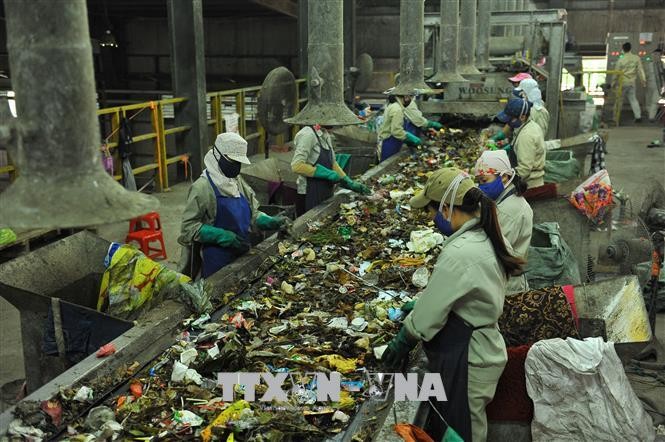(VOVWORLD) - The Ministry of Natural Resources and Environment held an international seminar in Hanoi on Wednesday to discuss urban solid waste management to meet demand for the circular economy.
 Ninh Binh solid waste treatment facility in Tam Diep city, Ninh Binh province (Photo: VNA) Ninh Binh solid waste treatment facility in Tam Diep city, Ninh Binh province (Photo: VNA) |
Urban solid waste in 2015 had risen 160% from 2010 and is forecast to rise 240% by 2020 and 320% by 2025. Solid waste per capita will soar from 0.95 kg in 2009 to 1.6 kg by 2025. According to the Vietnam State of the Environment Reports, urban solid waste increases 16% each year with 70% of that amount being domestic solid waste.
Seminar participants suggested that Vietnam learn from other countries’ experience, advanced methods, and latest tools and technologies in urban solid waste management to improve its capability.
Deputy Minister of Natural Resources and Environment Vo Tuan Nhan said: “Vietnam is working on urban solid waste management. A normal economy involves exploitation, production, consumption, and discharge, while a circular economy reuses and recycles discharged materials to make other sorts of products. This reduces the costs of waste treatment and exploiting new resources.”
Vietnam has a number of circular economy initiatives involving solid waste, such as industrial parks in Ninh Binh, Can Tho, and Da Nang which can save up to 6.5 million USD a year. Other initiatives include turning Tiger beer bottle caps into steel to build bridges and using seafood by-products (like shrimp heads and shells) to produce chitosan, an anti-bacterial substance, and SSE, a food used in husbandry.